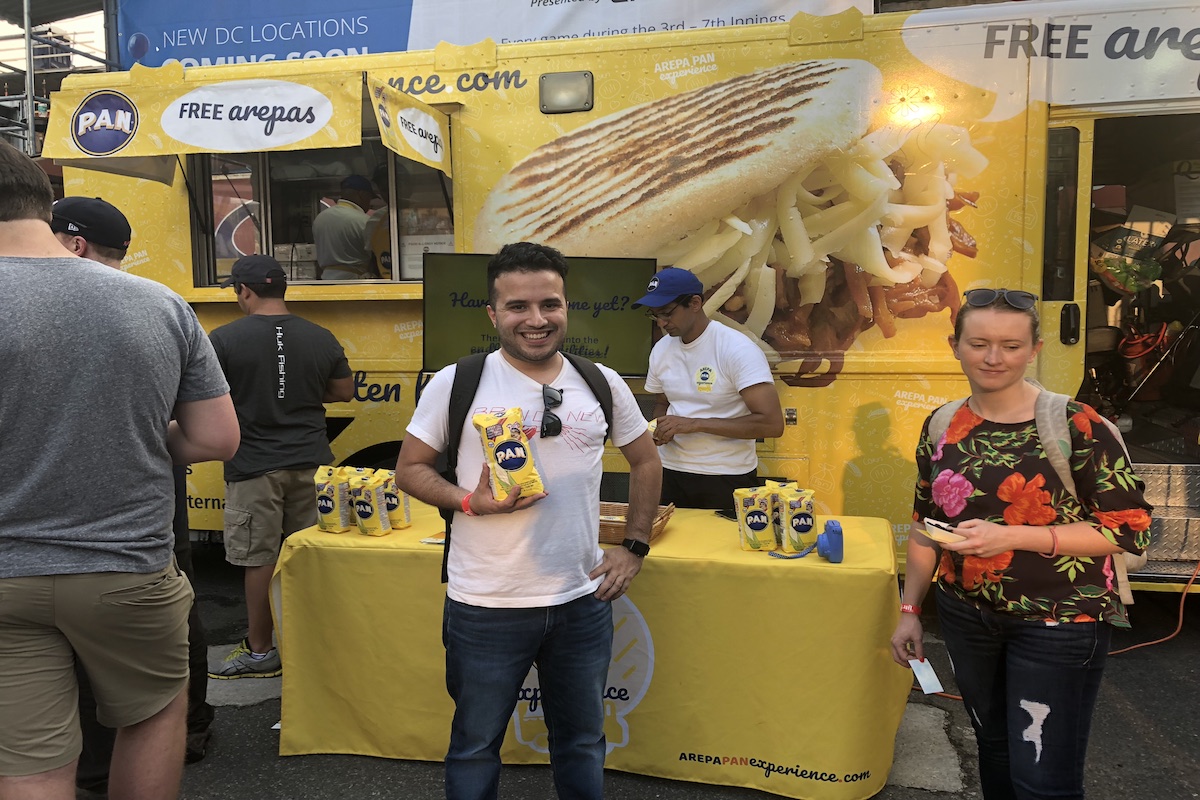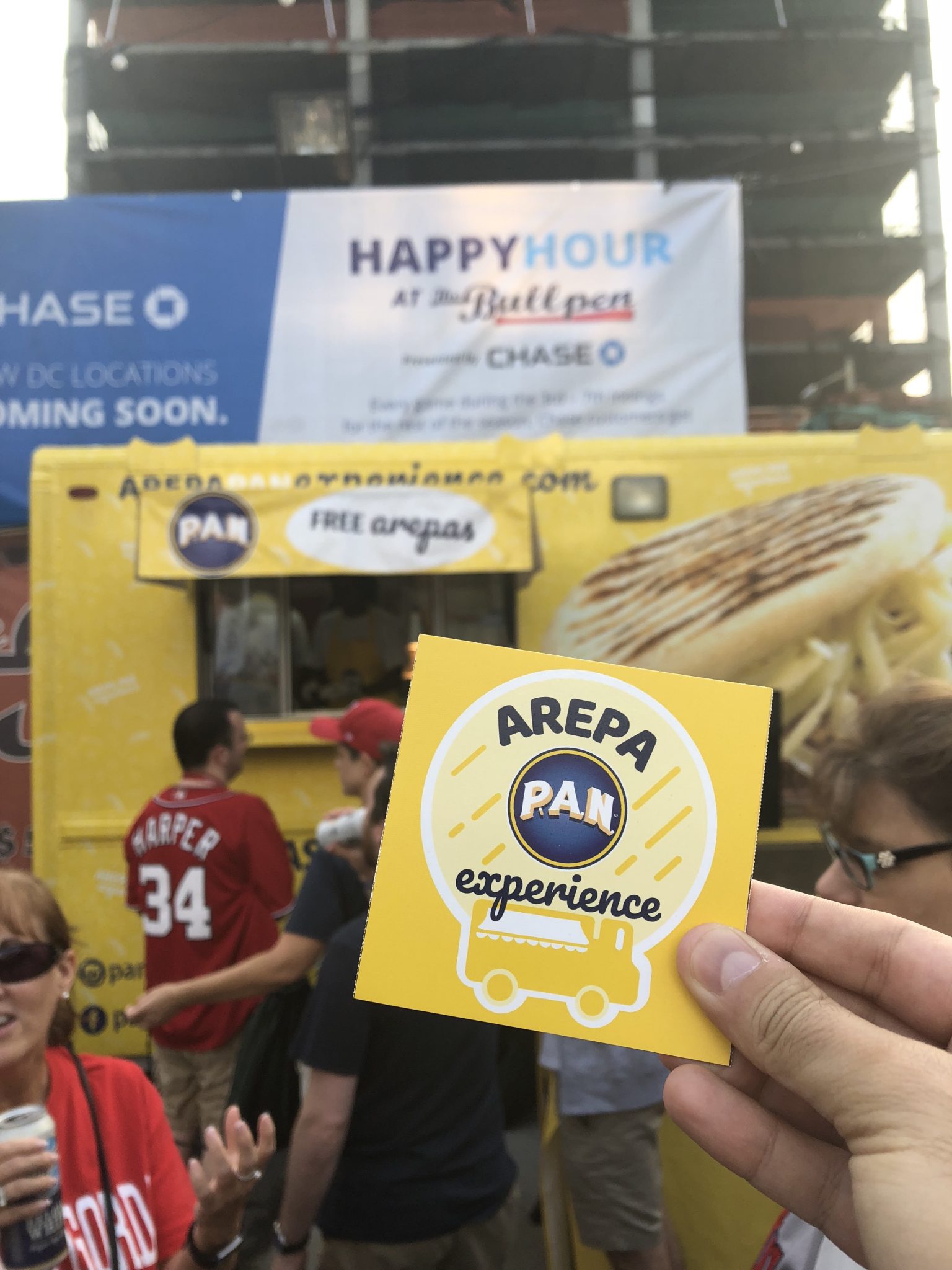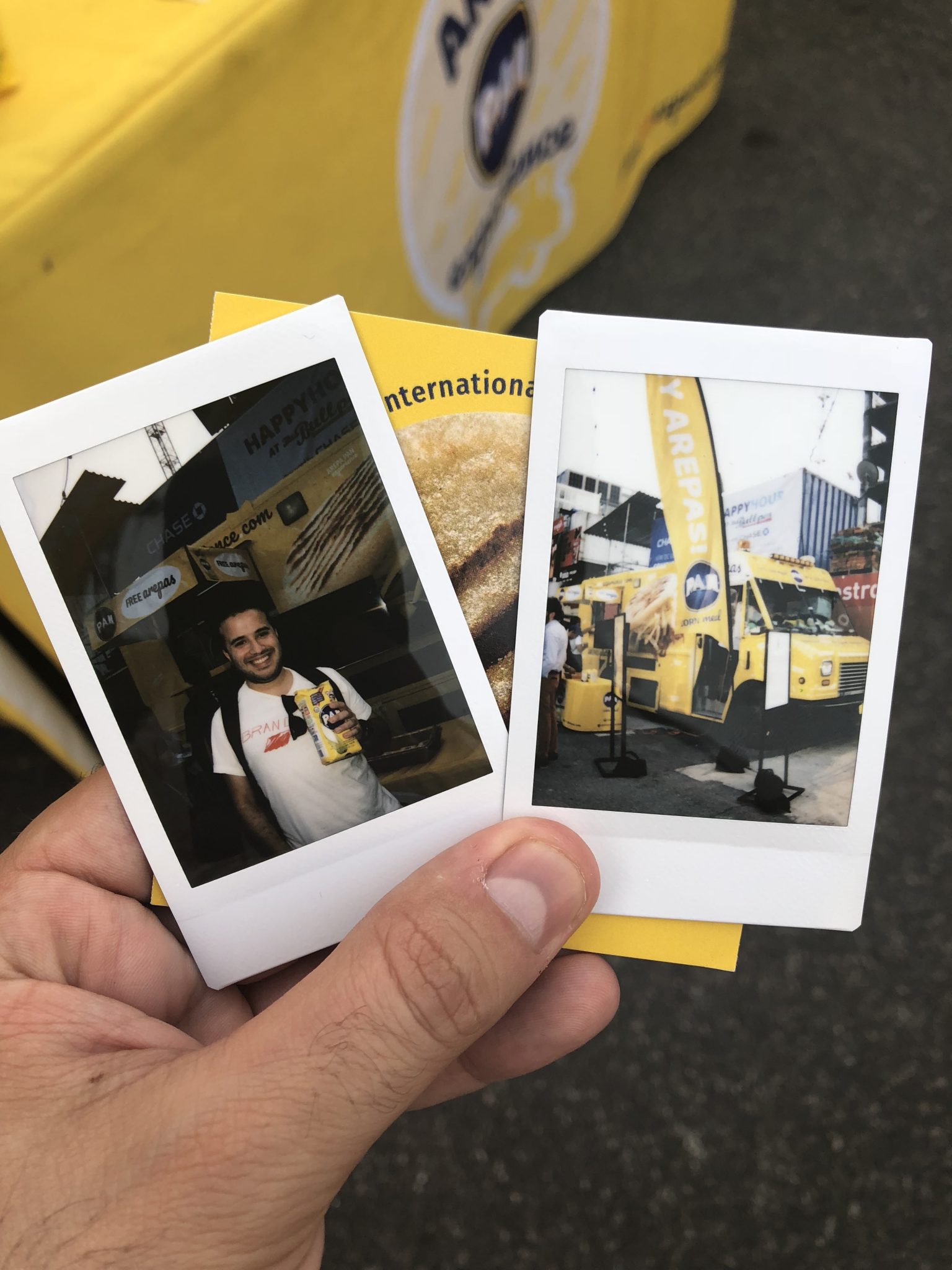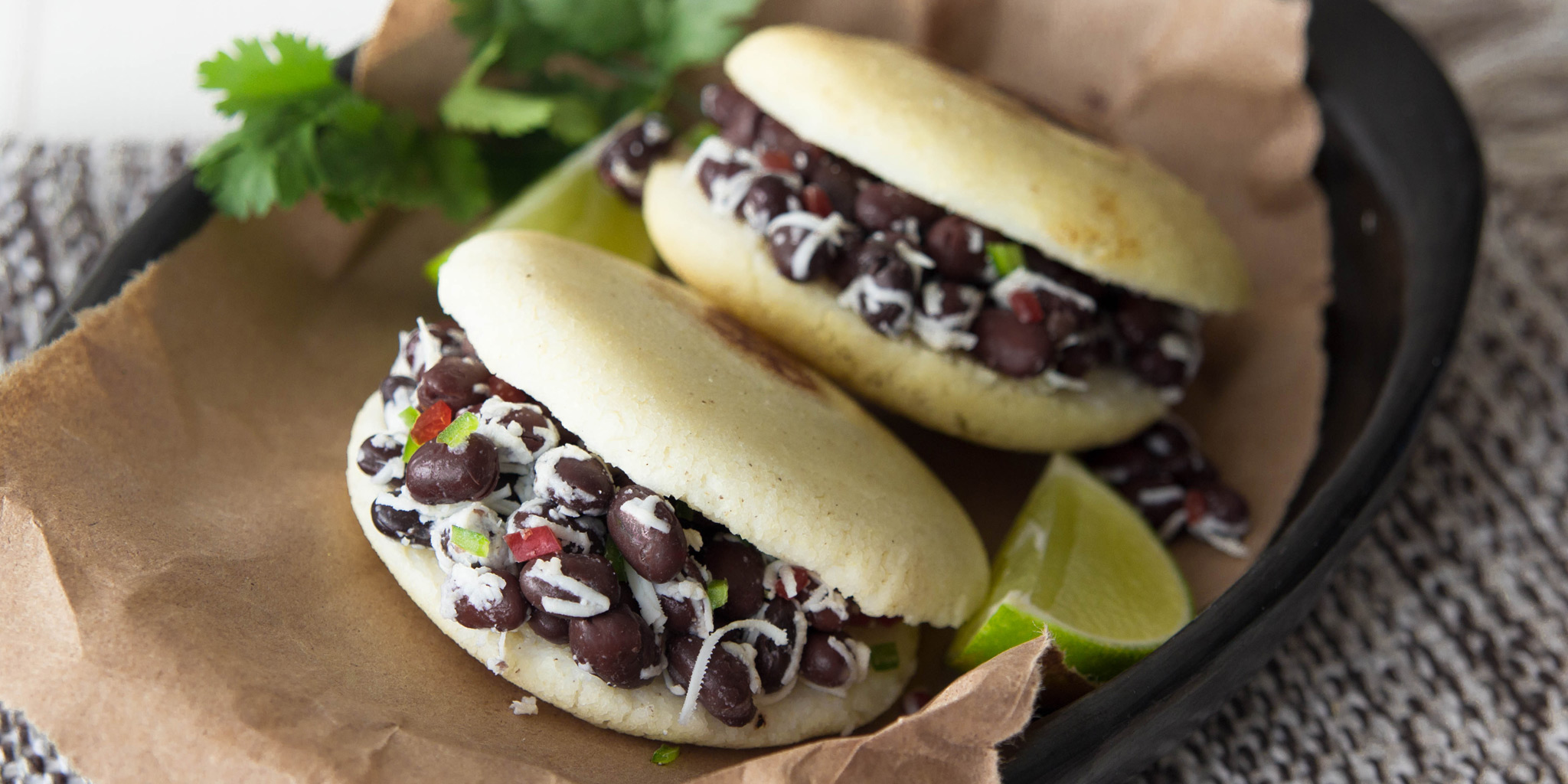

Juan Escalante at Nationals Park.
WASHINGTON, D.C. — Imagine having tickets to watch the Nationals take on the Phillies at your local baseball stadium. You are a local in the Washington D.C. area, you leave work wearing your team’s colors and start thinking of that hot dog or beer you might buy at the ballpark.
However, once you arrive at the stadium, you see your friend munching on what appear to be small white hockey pucks made of dough, all of which are filled with black beans and white cheese.
“WHAT ARE THOSE?!” you ask in a frenzy. Those aren’t the nachos, hot dogs, or pretzels they sell at the stands.
Your friend points to a bright yellow food truck with a giant word printed at the top in big bold blue letters: AREPA.


Arepa PAN at Nationals Park
The arepa is a staple of Venezuelan cuisine, something so emblematic and recognizable that it might be on par with the country’s national anthem or flag. But what is behind the arepa is just as symbolic, a brand of cornmeal flour packaged in a bright yellow bag with the word PAN printed right on top.
For the past decades, Venezuelans have been able to buy Harina PAN, the main arepa ingredient, across the United States. It is perhaps one of the few reminders of their previous home, a nation embroiled in chaos due to political and economic uncertainty. Now, Harina PAN has spread to several markets in cities like Miami, New York, and yes, Washington D.C.
In an effort to broaden its appeal, the Harina PAN brand has hit the road with the intention of introducing the American public, meaning non-Latinos, to the arepa and the broad culinary possibilities of the gluten-free white cornmeal that it is made of.
Earlier this week, a food truck from Harina PAN handed out free arepas outside of Nationals Park—introducing many baseball fans to the arepa for the first time.


More of Juan’s Arepa PAN experience.
This stop was part of Harina PAN’s road trip across the east coast, where it sought to park its food truck along a variety of cities where Venezuelans and Latinos are present. Having gone to states like New York, New Jersey, and Philadelphia already, one of PAN’s representatives told me that the goal of the food truck and its cross-country tour was to broaden the appeal to a much bigger audience. According to Joseph Fragoso, business development manager for Harina PAN:
“Venezuelans love it, obviously. But for people who haven’t tried it the reaction has been overwhelmingly positive. New tasters are excited for the flavors and recipes the PAN brand has to offer, but native Venezuelans have certainly not been disappointed.”


Black beans and white cheese arepas (Provided by Harina PAN)
The results among the crowd were, as you might expect, a bit mixed. Venezuelans stood in line happy to see a familiar brand in the capital of the United States. Virginia, an arepa eating veteran, shared the following thoughts:
“I love that we are not only showcasing the arepa, but also the PAN flour. For me, as a Venezuelan, it’s increasingly important that other people, not just Latinos learn about our food and culture.”
First-time arepa eater John told me that he enjoyed his first arepa and would happily eat another one at a local restaurant “just as long as they make it as good as this one.”
Of course, there were some comments to consider from Latinos at Nationals Park.
“I think they should be some more traditional recipes in the promotional materials. I think it is great that want to promote food and culture, but we shouldn’t ‘whitewash’ to appeal to another market or consumer,” a Latina woman told me as she enjoyed her second arepa.
One thing is certain: Harina PAN will continue their tour across the east coast with upcoming stops in Georgia and Florida. Be sure to check out their website for more.
***
Juan Escalante tweets from @JuanSaaa.


